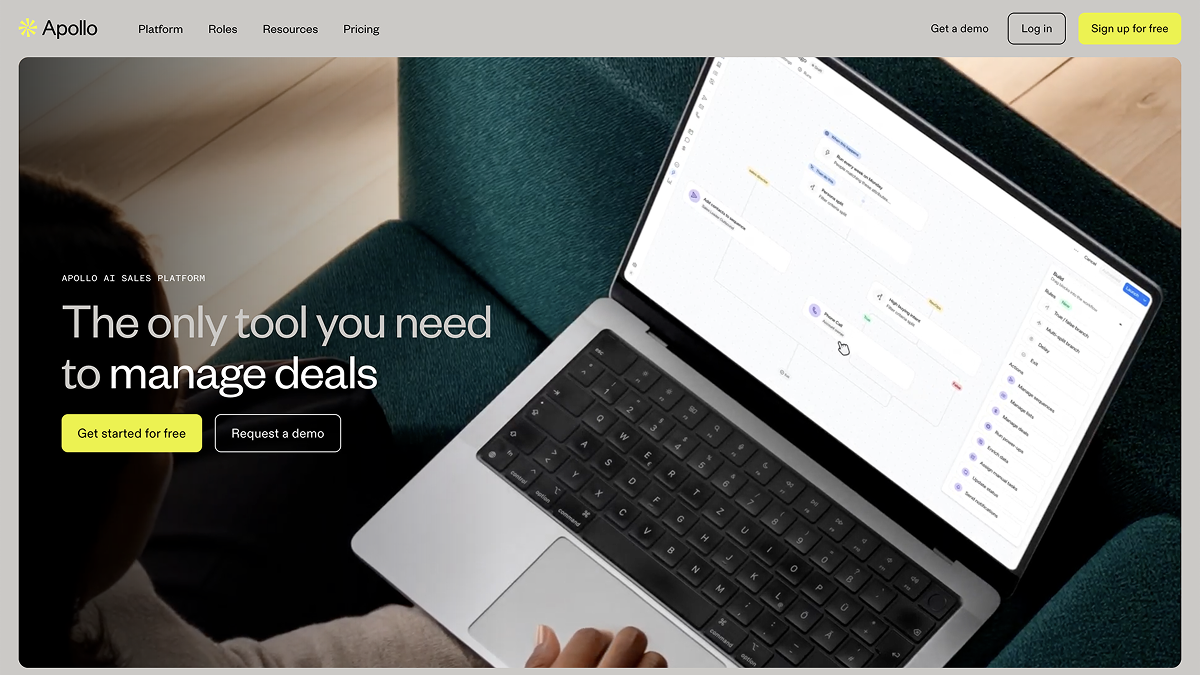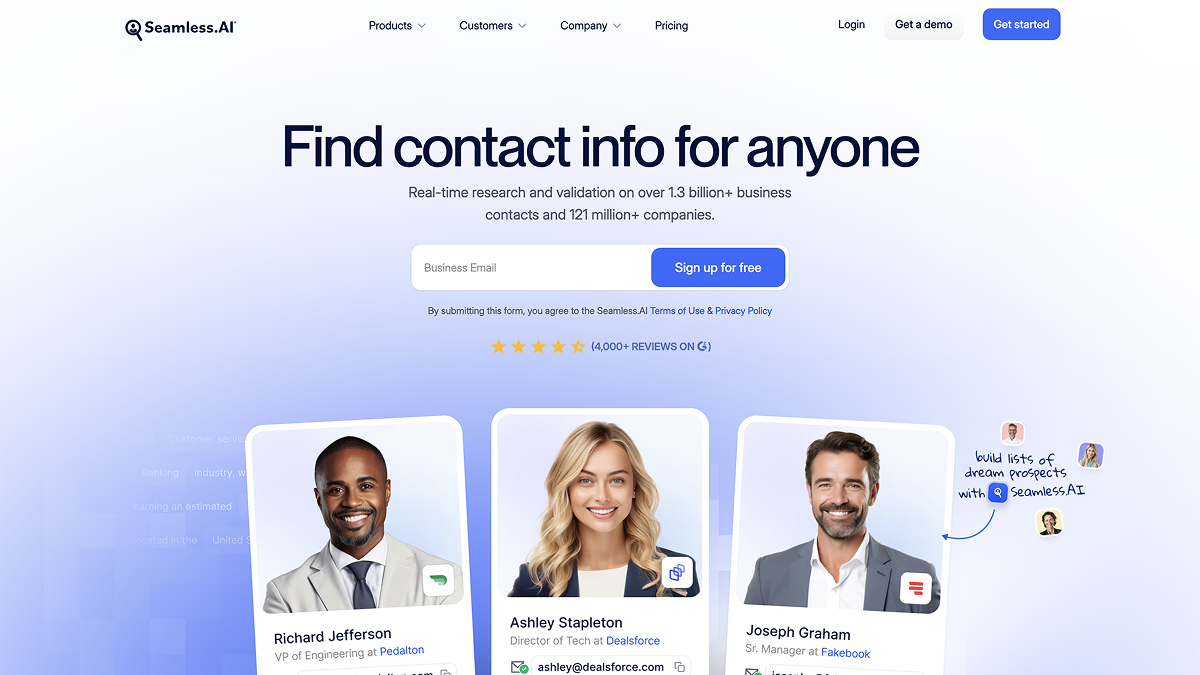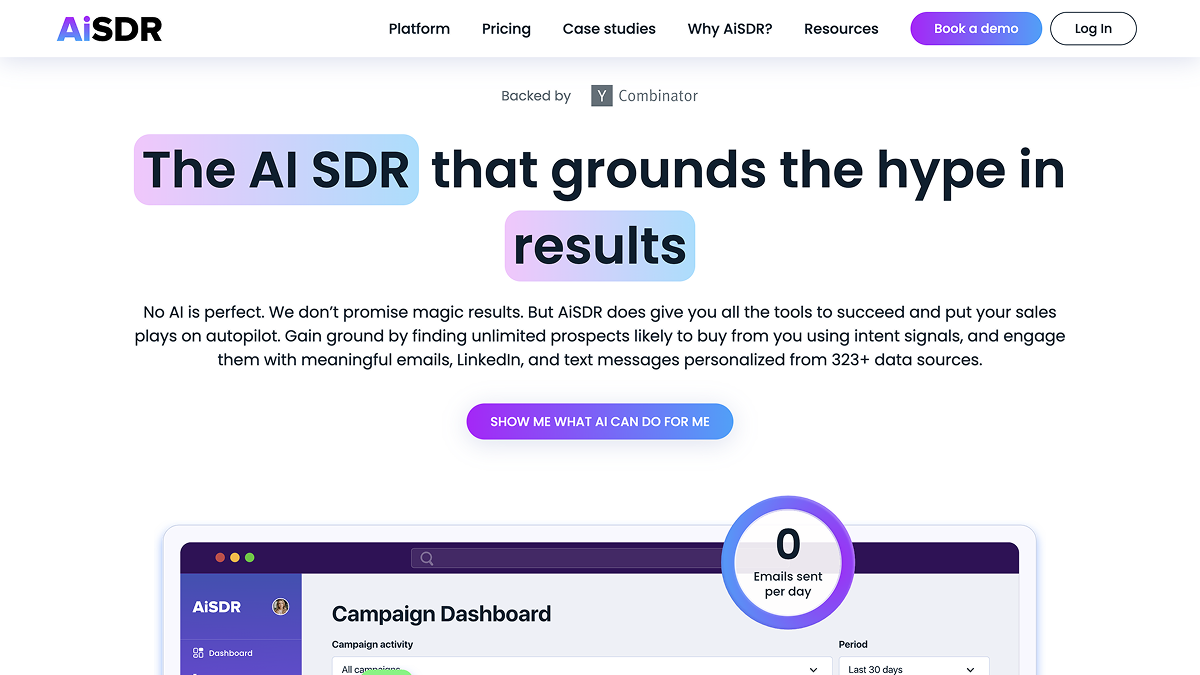Best Tools Summary
• Apollo
• Seamless
• AiSDR
Why Prospecting on LinkedIn?
Prospecting on LinkedIn is a crucial strategy for any sales professional, especially for someone in your position as a junior account executive. Here are several reasons why you should focus on LinkedIn as a prospecting tool:
1. Targeted Audience: LinkedIn is a professional networking platform with over 900 million users, making it an ideal space to find potential clients and decision-makers in your industry. You can easily filter your search by industry, company size, location, and job title to identify the right prospects.
2. Professional Credibility: LinkedIn profiles typically include detailed professional backgrounds, endorsements, and recommendations. This information allows you to understand your prospects better and approach them with a tailored pitch that resonates with their needs and pain points.
3. Content Sharing: LinkedIn is not just a platform for networking; it's also a space for sharing valuable content. By engaging with your prospects' posts, sharing relevant articles, or creating your own content, you can position yourself as a thought leader in your field. This builds trust and opens doors for conversations.
4. Direct Communication: LinkedIn provides a direct line of communication through messaging. You can reach out to prospects with personalized messages, making it easier to initiate a conversation without the barriers typically associated with cold calling or emailing.
5. Networking Opportunities: LinkedIn allows you to connect with mutual contacts, which can facilitate warm introductions. Leveraging your network can increase your chances of a positive response and make your outreach more effective.
6. Insights and Analytics: LinkedIn offers tools that provide insights into your prospecting efforts, such as who viewed your profile or engaged with your content. This data can inform your strategy and help you refine your approach.
7. Building Relationships: Successful sales are often about relationships. LinkedIn allows you to nurture these relationships over time. By staying engaged with your network and providing value, you can keep yourself top-of-mind when your prospects are ready to make a purchasing decision.
8. Industry Trends and Competitor Analysis: LinkedIn is a great resource for staying informed about industry trends and competitor activities. Following relevant groups, influencers, and companies can provide valuable insights that you can leverage in your conversations with prospects.
9. Recruitment and Talent Insights: If you are looking to target companies that may need your services, LinkedIn can give you insights into hiring trends and company growth, indicating potential opportunities for your product or service.
10. Global Reach: Unlike traditional networking, LinkedIn allows you to connect with prospects globally. This expands your potential market significantly and provides opportunities in regions you may not have considered.
In summary, prospecting on LinkedIn is not just about finding leads; it’s about building relationships, establishing credibility, and positioning yourself as a valuable resource. By leveraging the platform effectively, you can drive more meaningful conversations and ultimately close more deals. Embrace the opportunity to connect and engage, and you'll see significant benefits in your sales efforts.
How to use LinkedIn for Prospecting?
Prospecting on LinkedIn can be a highly effective way to connect with potential clients. Here are some best practices to help you succeed in your LinkedIn prospecting efforts.
Optimize Your Profile
- Professional Photo: Use a clear, professional headshot to make a good first impression.
- Compelling Headline: Craft a headline that clearly states your role and value proposition.
- Detailed Summary: Write a summary that highlights your skills, experiences, and what you can offer to potential clients.
- Showcase Experience: List relevant experiences that demonstrate your expertise and successes.
Build Your Network
- Connect Strategically: Send connection requests to people in your target market, including decisionmakers and influencers.
- Personalize Connection Requests: Always include a personalized message explaining why you want to connect.
Research Your Prospects
- Utilize Advanced Search: Use LinkedIn's search filters to find specific industries, companies, and job titles that align with your target audience.
- Check Activity: Look at your prospects' recent activity (posts, comments) to understand their interests and pain points.
Engage with Content
- Share Valuable Content: Post relevant articles, insights, or case studies that showcase your expertise and add value to your network.
- Comment Thoughtfully: Engage with your prospects' content by leaving thoughtful comments that spark conversation.
Use InMail Wisely
- Craft Personalized Messages: When reaching out via InMail, personalize your message to demonstrate that you’ve done your homework.
- Focus on Value: Clearly explain how you can help them solve a problem or achieve a goal.
Nurture Relationships
- Follow Up: If a prospect doesn’t respond initially, don’t hesitate to follow up after a week or two.
- Stay Top of Mind: Continue to engage with their content and share insights periodically to maintain the relationship.
Leverage LinkedIn Groups
- Join Relevant Groups: Participate in groups related to your industry or target market to connect with prospects.
- Contribute Meaningfully: Share insights, answer questions, and contribute to discussions to establish credibility.
Monitor Analytics
- Track Engagement: Use LinkedIn’s analytics to track which posts and messages resonate with your audience.
- Adjust Your Strategy: Based on the data, refine your approach and focus on what works best.
Be Authentic
- Be Yourself: Authenticity builds trust. Be genuine in your interactions and avoid overly salesy language.
- Listen Actively: Pay attention to your prospects’ needs and concerns, and tailor your approach accordingly.
Set Goals and Stay Consistent
- Define Objectives: Set clear goals for your prospecting efforts, such as the number of connections, messages sent, or meetings scheduled.
- Consistency is Key: Make prospecting on LinkedIn a regular part of your routine to build momentum and achieve better results.
Best Tools for Prospecting on LinkedIn
Apollo
Apollo.io is a sales intelligence and engagement platform designed to help businesses streamline their prospecting efforts by providing access to a vast database of leads, insights, and tools for outreach. The platform combines features such as lead generation, contact management, email tracking, and analytics to support sales teams in identifying and engaging potential customers more effectively.

Using Apollo.io for Efficient LinkedIn Prospecting
While Apollo.io is a robust tool on its own, it can be particularly powerful when used in conjunction with LinkedIn. Here’s how you can leverage Apollo.io to enhance your prospecting efforts on LinkedIn:
1. Identify Your Ideal Customer Profile (ICP): Use Apollo.io to define and refine your ICP. Utilize the platform’s extensive database to gather insights about your target audience, including demographics and firmographics.
2. Build Target Lists: Use Apollo.io’s search features to create targeted lists of potential leads. By filtering based on your ICP criteria, you can generate a list of prospects that align with your business objectives.
3. Export Leads to LinkedIn: Once you have a list of potential leads on Apollo.io, use this information to search for and connect with them on LinkedIn. You can often find their LinkedIn profiles through a simple search using their names and company details.
4. Personalize Your Outreach: When reaching out to prospects on LinkedIn, leverage the information you’ve gathered from Apollo.io. Personalize your connection requests and messages by referencing common interests, mutual connections, or specific insights about their business.
5. Utilize LinkedIn Messaging: After connecting, use LinkedIn’s messaging feature to engage with your prospects. Apollo.io can help you craft personalized messages based on the data you've collected, improving your chances of receiving a response.
6. Track Engagement: Use Apollo.io’s email tracking and analytics features to monitor how your outreach is performing. This data can help you refine your LinkedIn prospecting strategies over time.
7. Follow Up: If you don’t receive a response, use Apollo.io to set reminders for follow-ups. A well-timed follow-up can significantly increase your chances of engaging with potential leads.
Seamless.ai
Seamless.ai is a robust sales intelligence and prospecting tool designed to help individuals and businesses enhance their lead generation efforts. It leverages advanced algorithms and a vast database to provide users with accurate contact information, including email addresses and phone numbers, for potential prospects.

Here's how Seamless.ai can assist you in prospecting on LinkedIn
Lead Generation: Seamless.ai allows you to identify and generate leads by searching for prospects based on various criteria, such as job titles, industries, and company sizes. This feature helps you find the right individuals on LinkedIn who fit your target audience.
Data Enrichment: Once you find potential leads, Seamless.ai can enrich your prospecting data by providing additional information such as company details, social media profiles, and professional histories. This enriched data helps you tailor your outreach and engage prospects more effectively.
Integration with LinkedIn: Seamless.ai integrates seamlessly with LinkedIn, allowing you to access and extract data directly from LinkedIn profiles. This integration streamlines your prospecting process, enabling you to gather valuable information without switching between multiple platforms.
Email and Phone Number Discovery: One of the standout features of Seamless.ai is its ability to find verified email addresses and phone numbers for your prospects. This capability is crucial for cold outreach, as having direct contact information can significantly increase your chances of connecting with potential clients.
Automated Outreach:Using Seamless.ai, you can automate your outreach efforts. The tool can help you create personalized email templates and follow-up sequences, ensuring that you maintain consistent communication with your prospects.
Analytics and Reporting: Seamless.ai provides analytics and reporting features to track your prospecting efforts. You can measure key metrics, such as open rates and response rates, allowing you to optimize your strategies and improve your outreach effectiveness.
User-Friendly Interface: The platform is designed to be user-friendly, making it easy for sales professionals of all experience levels to navigate and utilize its features effectively.
AiSDR
AiSDR.com is an online platform designed to leverage artificial intelligence for sales development and prospecting, particularly on professional networking sites like LinkedIn. The primary goal of AiSDR is to streamline the prospecting process, making it easier and more efficient for sales professionals to identify and connect with potential leads.

Key Features of AiSDR.com
1. AI-Powered Prospecting: AiSDR utilizes AI algorithms to analyze vast amounts of data, helping users identify high-quality leads based on specific criteria such as industry, job title, location, and company size.
2. Automated Outreach: The platform offers tools for automating outreach efforts, including personalized messaging and follow-up sequences, which can save time and increase response rates.
3. Data Enrichment: AiSDR provides users with enriched data on prospects, including contact information, social media profiles, and company insights, enabling more informed conversations.
4. Integration with LinkedIn: The platform is designed to work seamlessly with LinkedIn, allowing users to directly integrate their prospecting efforts with their LinkedIn accounts.
5. Analytics and Reporting: AiSDR offers analytics tools to track the performance of outreach campaigns, helping users understand what works best and refine their strategies.
How to Use AiSDR.com for Efficient Prospecting on LinkedIn
1. Create an Account: Start by signing up for an account on AiSDR.com. Familiarize yourself with the platform's features and dashboard.
2. Define Your Ideal Customer Profile: Use the platform’s tools to outline your ideal customer profile (ICP). Consider factors like industry, company size, and decision-maker roles.
3. Utilize AI for Lead Generation: Input your ICP into AiSDR to generate a list of potential leads. The AI will sift through LinkedIn data to identify individuals and companies that match your criteria.
4. Personalize Outreach: Use the automated messaging feature to craft personalized connection requests and follow-ups. Tailor your messages based on the prospect's profile to increase engagement.
5. Integrate with LinkedIn: Connect your LinkedIn account with AiSDR to streamline your outreach. This integration will allow you to send connection requests and messages directly through the platform.
6. Engage with Content: Regularly engage with your prospects by liking and commenting on their posts. This helps build rapport and increases the chances of them responding to your outreach.
7. Monitor and Adjust: Use the analytics tools provided by AiSDR to track your outreach performance. Analyze which messages resonate the most and adjust your approach accordingly.
8. Follow Up: Set up automated follow-up sequences to ensure you stay on top of your leads without overwhelming them. Persistence is key in sales, and timely follow-ups can significantly increase your success rate.


